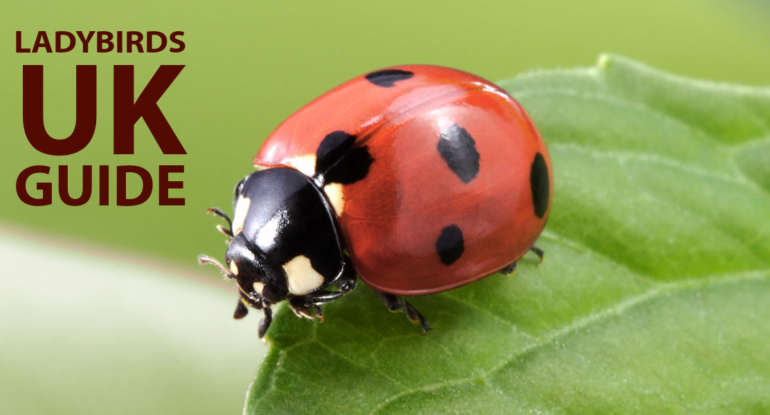What are Ladybirds?
There are around 5,000 species of ladybirds found in the world. They are often referred to as ladybugs or ladybeetles and, in many cultures, they’re believed to bring luck. They are available in a variety of colours and patterns, however the most well-known among us in UK is the seven-spot ladybird. UK includes the 7-spot Ladybird which features a glossy, red-and-black body. Many people are drawn to ladybirds as they look beautiful, elegant and safe for humans.
Ladybirds identification
Eggs are easy to recognize typically oval-shaped, elongate and laid in groups. Their color varies among species that range between light and dark.
Larvae are brightly colored and are distinctive in appearance. They typically feed on aphids that are found in crop.
Adults (1-10 millimetres long) generally brightly colored (yellow or orange) typically with patterns (spots bands, stripes or spots) wings Domed bodies, small anastomoses that are club-shaped.
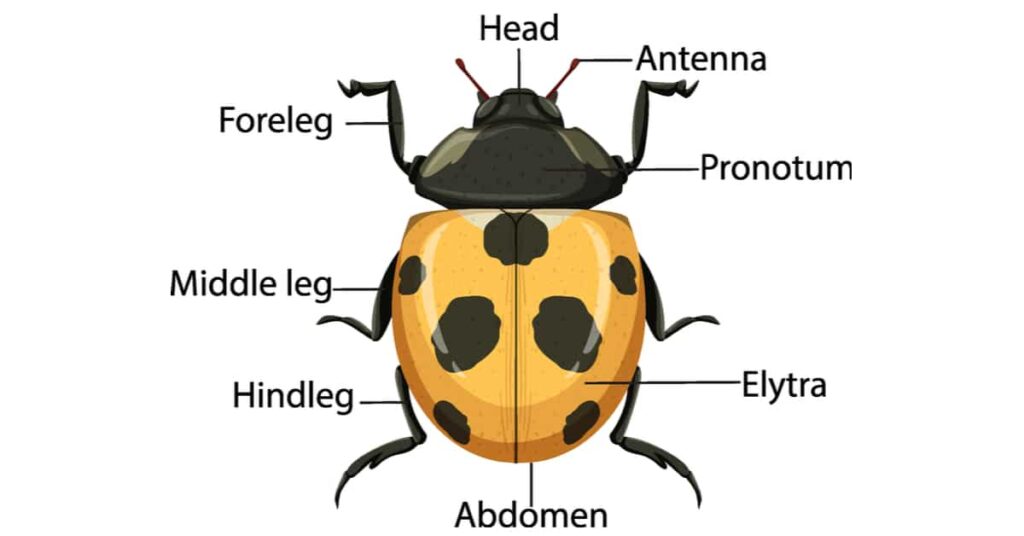
Ladybird life cycle
The lifespan typically lasts approximately one year, but occasionally there are two generations in a year. Eggs are laid from the spring and early summer close to their prey larvae.
Pupation takes place in mid-summer. adults emerge in the middle to end of the season. With enough warmth and food the larva’s development speed is greater as well as two generation per calendar year can be expected. They spend the winter as adults in warm and protected places like leaves, grass tussocks or crevices in the bark and even structures. They come out in spring to look for new their mates.
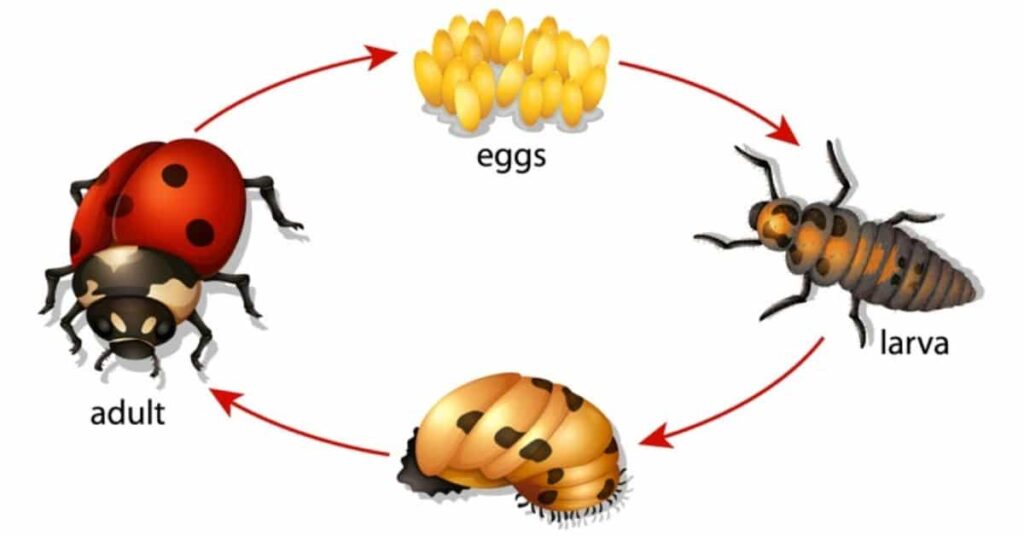
Ladybirds Benefits
Their primary food source is scale insects and aphids however, a few species consume mushrooms. The species with 24 spots consumes plants. Five species are thought to be important to control Aphids in cereals, potatoes, and sugar beet. Ladybirds are adept at flying; however, their adult dispersal is random , and it’s only when they find one plant that systematic search takes place, assisted by olfactory signals.
Ladybirds facts
1. The common name for ladybirds is Coccinellidae that originates from the Latin word coccineas which means ‘scarlet’.
2. To determine the species of ladybird correctly, the colour and the number of spots have to be considered.
3. It is believed that there are 47 species of ladybirds in the UK however, there are over 5 000 species worldwide.
4. Ladybirds feed on Aphids and that’s the reason they are an enjoyable sight in the garden . They are an alternative to spraying with chemical.
5. Ladybirds go into hibernation (or “overwinter”) from October right until February.
6. A ladybird’s adult life span is for anywhere between 1 and 3 years.
7. The most well-known ladybird within the UK can be identified as the Seven Spot Ladybird . This is a red ladybird with 7 spots in black.
8. When threatened the ladybird will hand tiny drops of unpalatable, yellow fluid.
9. Ladybirds that are females can be infected by the bacterium (spiroplasma) that causes male embryos to die.
10. A ladybird’s adult life span is between one and three years.
Ladybirds Poisonous
Ladybugs have been without doubt among the most stunning insects in the world. They are adorned with a vibrant shining and dotted red hue that is awe-inspiring to gaze at. But beneath the bright and colorful exterior did you realize that ladybugs contain harmful fluids that aid in their ability to repel predators? Predators that try to eat ladybugs may become sick due to their poisonous fluids.
Ladybugs aren’t stingers but they do bite. Ladybugs are tiny that they don’t do any injury or damage when they bite human beings. Their bites are much more pressure-like than a puncture. However, their toxic fluids can occasionally trigger allergic reactions among people. Ladybugs that bite leave a bite marks that may turn tiny red bumps, or even splotches on the skin because of allergic reactions.
How many species of Ladybirds are there?
You’ve probably had the pleasure of seeing or hearing about the various UK ladybirds, such as the 7-spot and 2-spot however did you realize there’s 47 different species of ladybirds currently present in Britain? There have been several recent arrivals in the last few years, such as the massive and vibrantly colored bryony as well as the Harlequin ladybird, but also several tiny and so-called obscure ladybirds.
It is estimated that there are thousands species of ladybirds across the globe, and recent studies suggest that there are over 6000 species!
Common Types of UK Ladybirds
| No. | Scientific name | Size | Habitat | Distribution |
| 1. | Eyed ladybird | 7 – 8.5mm | Coniferous and mixed forests | Uncommon, never in big numbers. |
| 2. | Striped ladybird | 6 – 8mm | widespread in the North East with a scattering across pine-rich areas | Quite rare. |
| 3. | Harlequin ladybird | 6 – 8 mm | The beetle colonizes different biotopes and can be found everywhere there are aphids | Not established in Northern Ireland yet. Established in counties Cork and Carlow |
| 4. | 7-spot ladybird | 5 – 8mm | Meadows, fields, steppes, gardens, parks, deciduous and mixed forests. | Widespread. |
| 5. | Cream-streaked ladybird | 5 – 6mm | Coniferous and mixed forests. | The Cream-streaked Ladybird first arrived in Britain during the 1930’s and has since spread outwards from it’s original colonisation site in Suffolk, to reach both Wales and Scotland. |
| 6. | Orange ladybird | 4.5 – 6mm | Deciduous forests, parks, gardens, copses. | Widespread, but not very common. |
| 7. | Cream-spot ladybird | 4 – 5mm | The common species can be found in deciduous and mixed forests, in parks and gardens, along forest edges and in meadows. | Widespread but not very common. |
| 8. | 18-spot ladybird | 4 – 5mm | old pines and breed in the crowns of pine trees | Restricted to conifers and probably very local. |
| 9. | 2-spot ladybird | 4 – 5mm | Forests, parks, gardens, hedges, meadows; in almost all habitats. | Found in the east of Northern Ireland & Cork to Waterford, Dublin and Galway |
| 10. | Larch ladybird | 4 – 5mm | Coniferous and mixed forests | Widespread on conifers in the north of Ireland. |
| 11. | Kidney-spot ladybird | 4 – 5mm | In wet biotopes on deciduous trees and shrubs. | Northumberland and County Durham. |
| 12. | 11-spot ladybird | 4 – 5mm | Almost exclusively coastal but can occurs along rivers and lake shores. | coastal zone and inland in southern Britain but much rarer north of the midlands |
| 13. | Adonis’ ladybird | 4 – 5mm | Fields, meadows, in different biotopes in the herb layer and on shrubs, often in coastal regions. | Occasional in Leicestershire & Rutland. |
| 14. | Water ladybird | 4mm | mostly occupying reed-beds and grassland in marshy or wet areas. | Fairly frequent in Leicestershire and Rutland. |
| 15. | 14-spot ladybird | 3.5 – 4.5mm | grassland, woodland edges, towns and gardens. | Widely distributed and common. |
| 16. | 10-spot ladybird | 3.5 – 4.5mm | On deciduous trees and meadows. | widely distributed across Britain and Ireland but absent from northern Scotland. |
| 17. | Pine ladybird | 3 – 4.5mm | found on a wide range of deciduous and coniferous trees. | widespread species in England and Wales, with some records from Scotland. |
| 18. | 22-spot ladybird | 3 – 4mm | The beetles found on meadows, at forest edges, in light forests, gardens and vineyards. | throughout England, but less so in Scotland and Wales. |
| 19. | 24-spot ladybird | 3 – 4mm | Grassland and meadows | widespread in England and Wales it is not particularly common. |
| 20. | 16-spot ladybird | 3 mm | Frequently in sandy areas, in dunes, on sandy river banks, in steppes and dry meadows. | throughout England north to Lincolnshire and west to Somerset. |
1. Eyed ladybird
The eyed Ladybird an enormous ladybird that can be located on or near conifers, particularly pine trees. Adults and larvae consume aphids, which makes them an excellent companion within the gardens. The life-cycle of a ladybird is comprised of four stages.
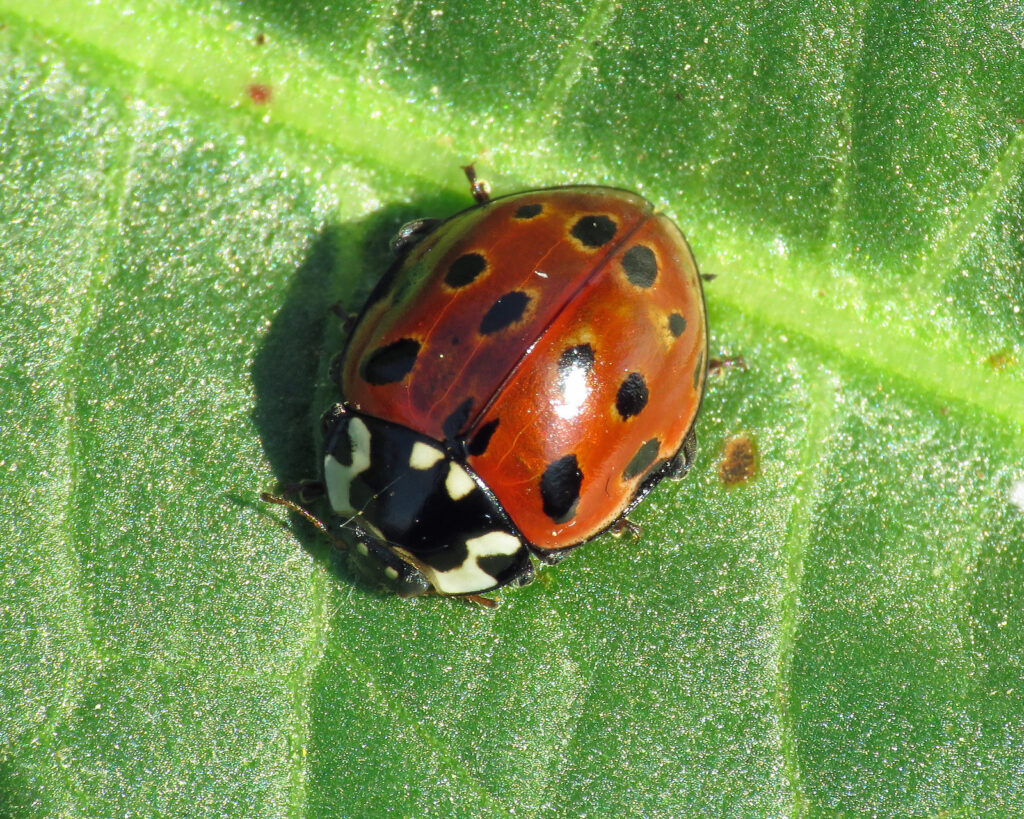
2. Striped ladybird
The Striped Ladybird is a large species, measuring about 7mm. It is an aphid-predator. And also feeds on specific aphids on pines, with an affinity for species that are larger of the Cinara family. It is commonly seen in mixed woodland and coniferous forests but can also be seen in areas of shelter belts.
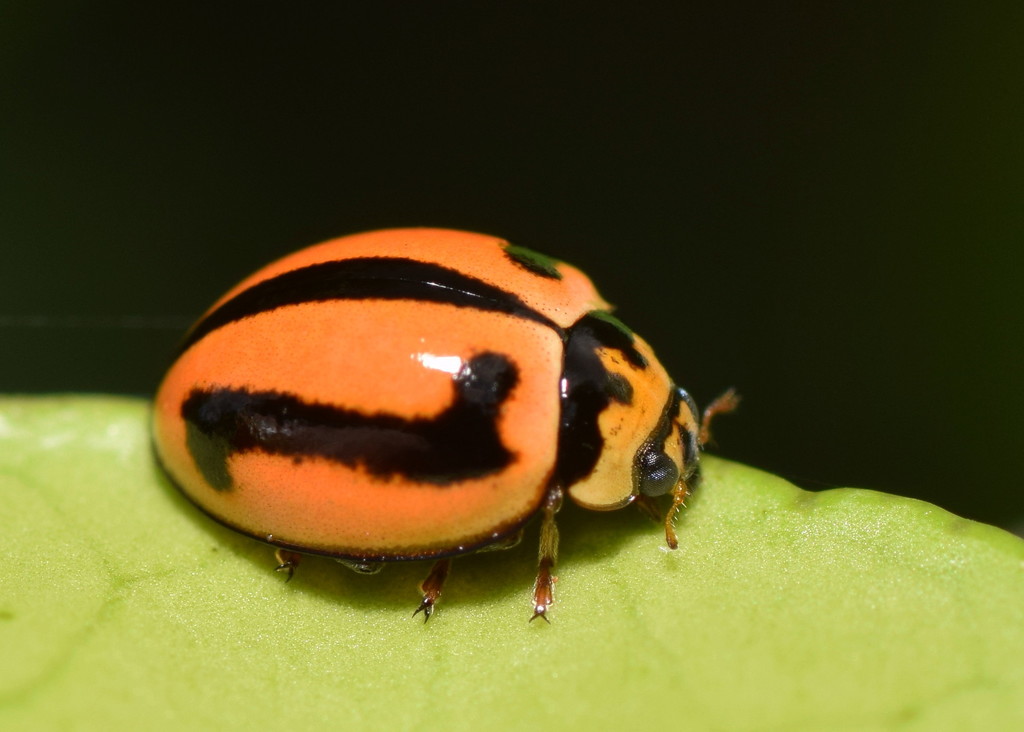
3. Harlequin ladybird
The harlequin ladybird was first seen to the UK in 2004 and is now among the top popular ladybirds that live in the country especially in cities and in gardens. It is among our biggest species, and is a fierce predator. It is able to compete with native species in aphid-prey.
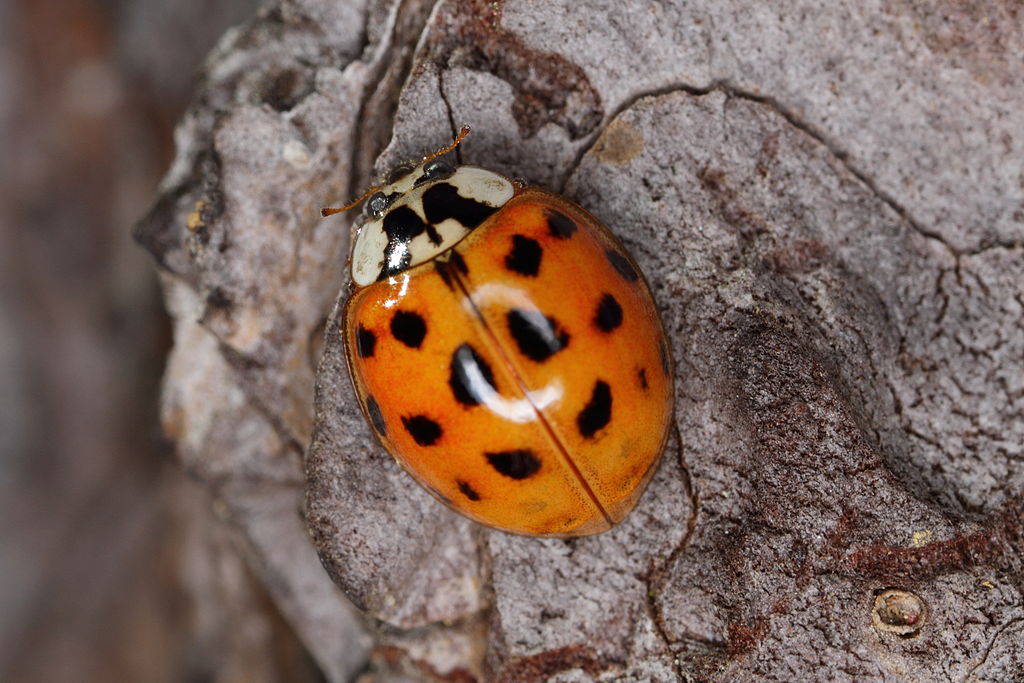
4. 7-spot ladybird
7-spot ladybirds are often seen together because it is the largest and most frequent species of ladybirds. They are common in parks and gardens or wherever there are aphids to feast on. Adults sleep within hollow stems of plants, often grouping in a big group.
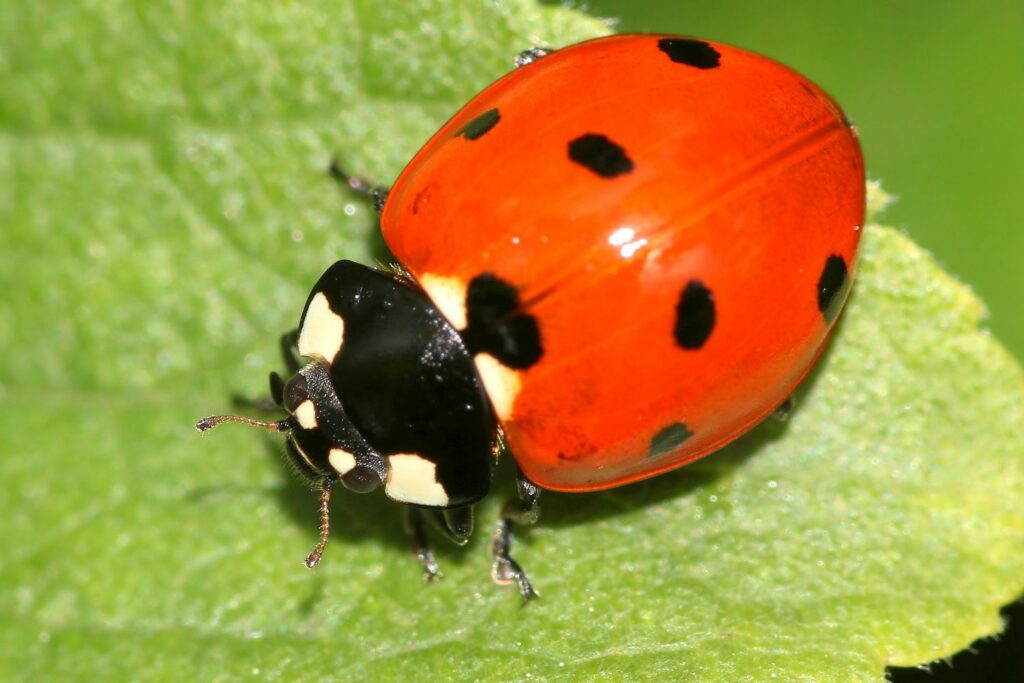
5. Cream-streaked ladybird
It is a medium-sized ladybird (5-6 millimetres) recognized by the black speckled pattern that covers its head and the pronotum. The colour of its body varies, but it is typically pink, salmon or yellow. There are a variety of spots and the number can be extremely variable. It is sometimes found on the herbaceous plant and shrubs like gorse or nettle however they are generally located near conifers.
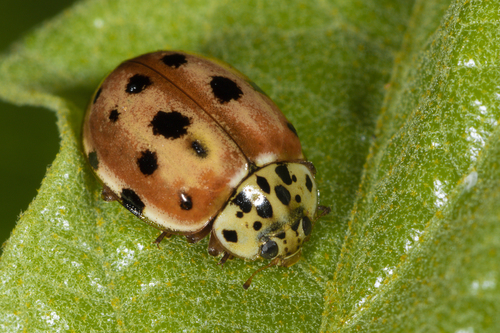
6. Orange ladybird
This orange-colored ladybird a huge ladybird which consumes mildew (fungus) on trees. it prefers sycamores in particular, but it is now spreading to ash and is growing in numbers. It is hibernates in leaf litter or in protected areas. The life cycle of a ladybird comprises four phases.
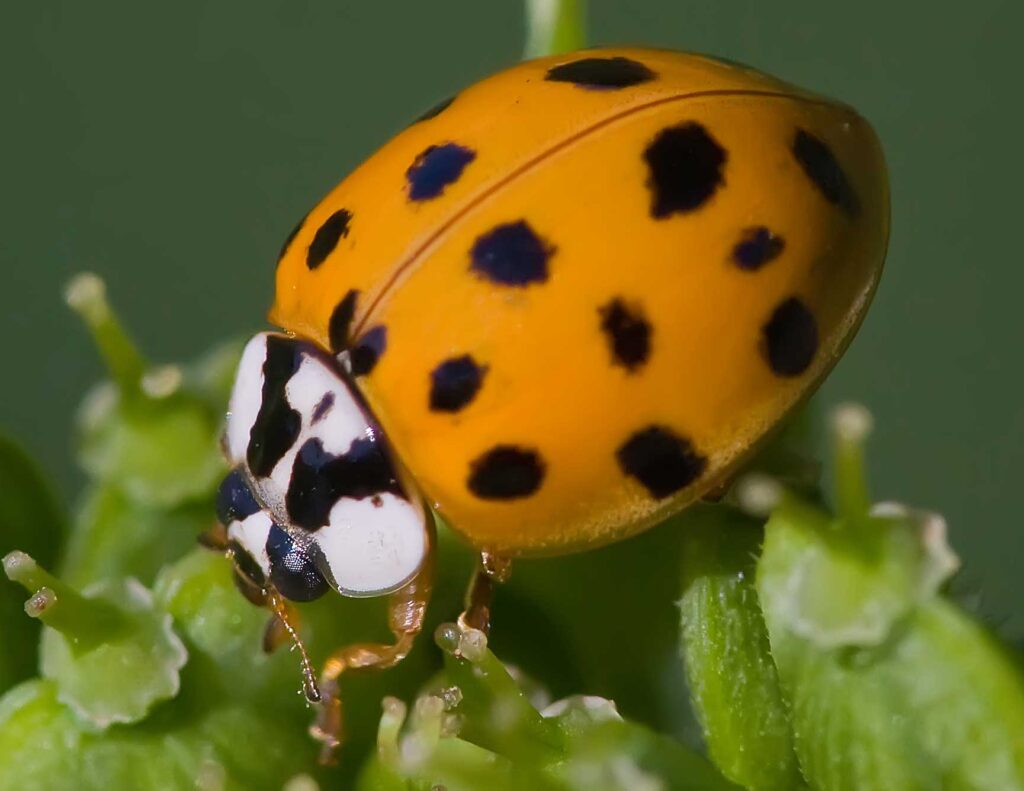
7. Cream-spot ladybird
The Cream-spot Ladybird is located in woodlands in hedgerows, along hedgerows, and on the branches. It is a distinct ladybird that has a maroon-brown body and 14 white spots. The Ladybird’s diet is based on Aphids as well as other soft-bodied insects like plant lice. It is usually located in woodlands as a tree expert dwelling on the leaves of broad-leaved plants, hedges and plants.
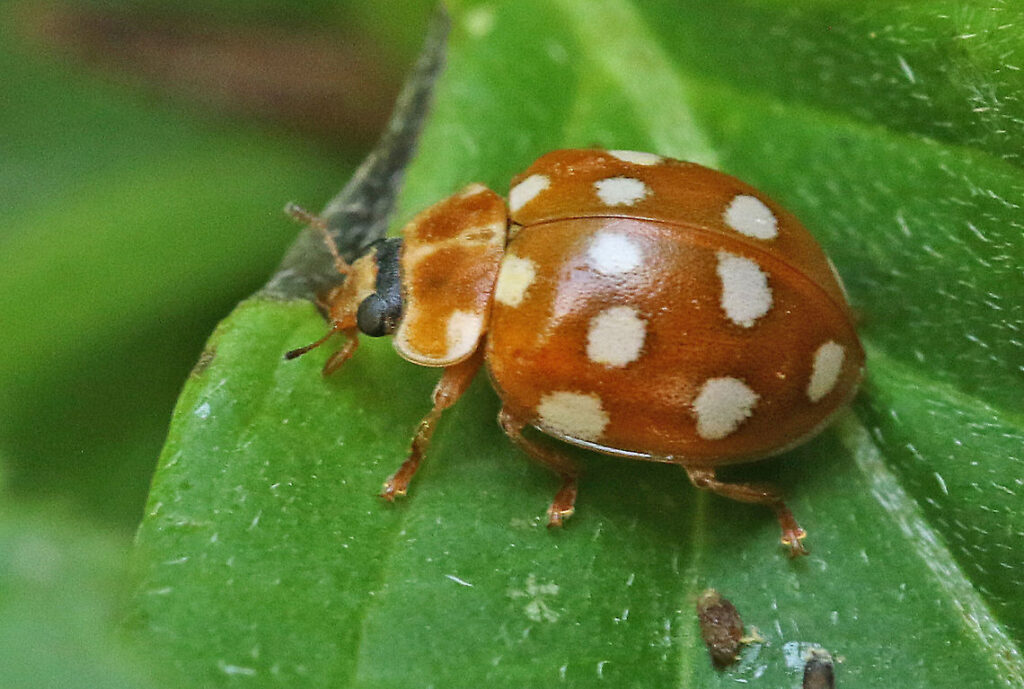
8. 18-spot ladybird
A stunning beauty, the 18-spot Ladybird is a tiny but beautiful ladybird which is associated with conifers particularly Scots Pine. Its size is 4-5mm. the colour of the wing cases is rich brown that is similar to the more widespread Ladybirds with Cream spots. The 18-Spot Ladybird is usually located close to pines. It can be difficult for ladybird to locate.
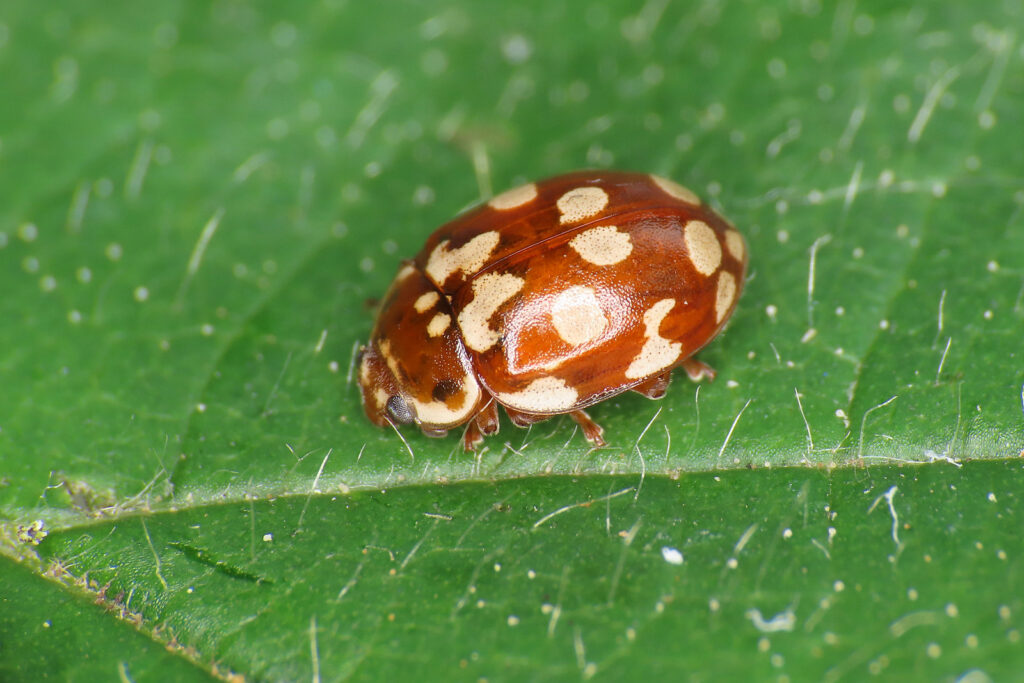
9. 2-spot ladybird
The 2-spot ladies are a medium-sized bird that is found in a variety of habitats, such as gardens, towns, and parks. Adults and larvae both feed on aphids and make them a great companion within the gardens. Adults hibernate during winter in trees or within houses, aggregating in huge quantities.
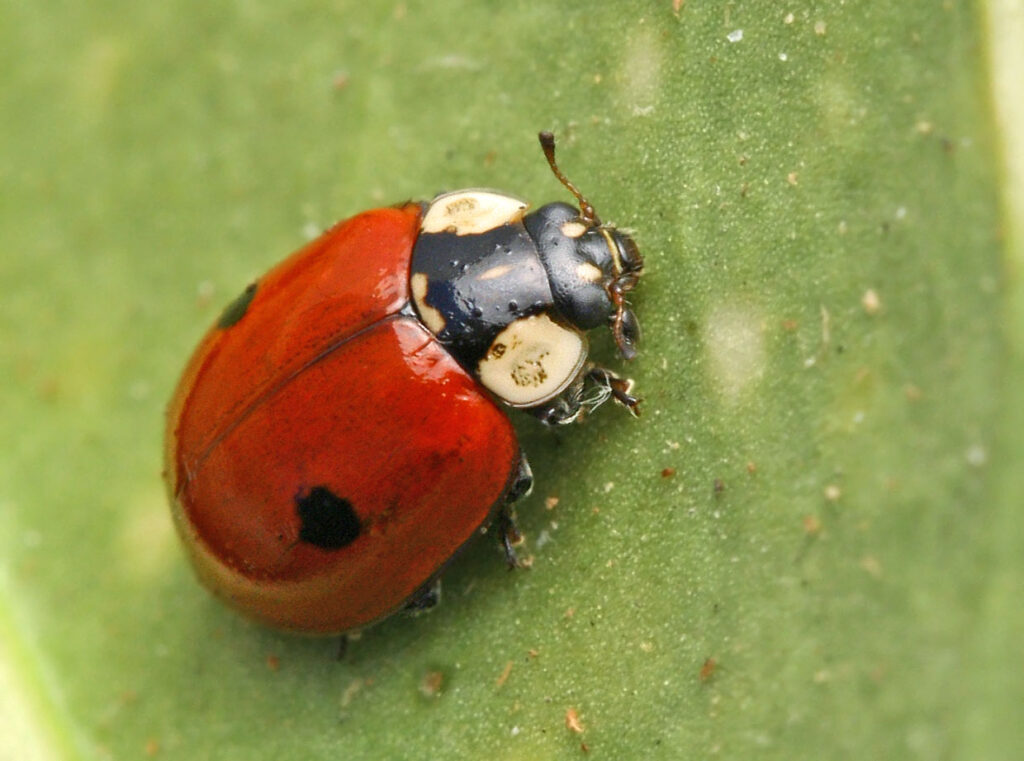
10. Larch ladybird
The Larch Ladybird’s colour is brown, with only a little spots. The pronotum of the bird has a dark, M-shaped marking. It has only a single dark line across the middle of the body. This Ladybirds eat sap sucking bug and other scale insect. And the pronotum of this ladybird has a dark M-shaped marking . It has only a single dark line across the middle the body.
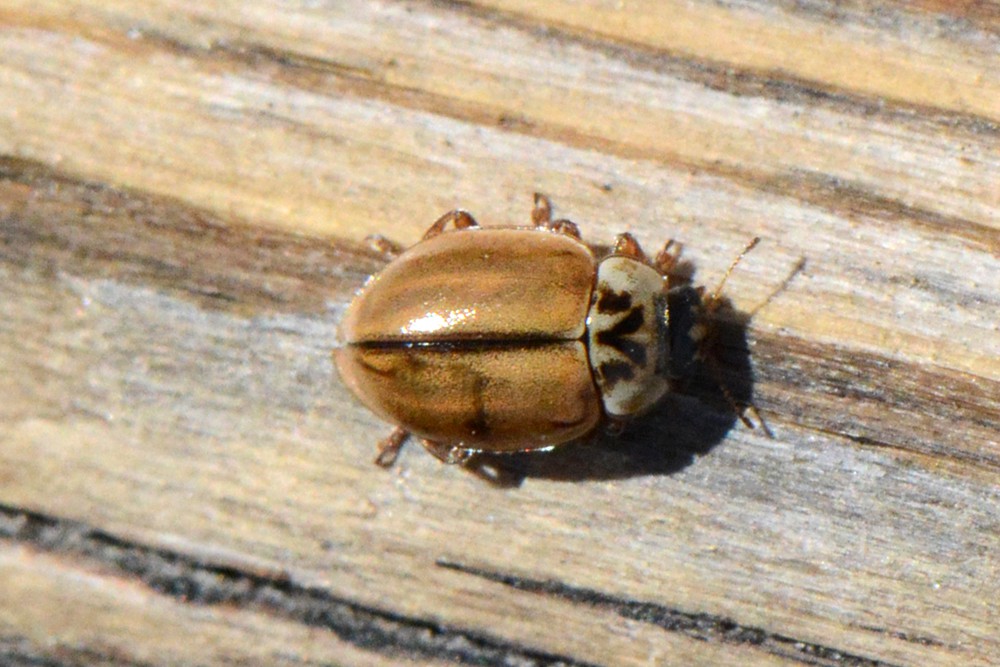
11. Kidney-spot ladybird
The Kidney-spot Ladybird is an all-black body, with an enormous red spot on the wings casing (elytron). The antennae and the underside of the wing are both orange. The wing casings feature an incredibly flat flange all around. It’s a tiny ladybird with a diameter of about 5 millimetres. It is usually found in areas with good wood typically in tree stumps.
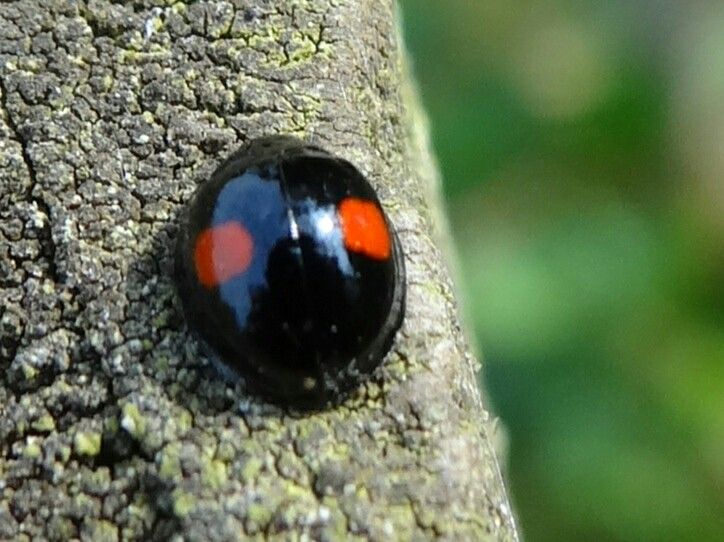
12. 11-spot ladybird
A tiny deep-red ladybird that has eleven spots that are laid out across three rows. The row closest to the head is dotted with three spots, while the middle one is bigger than the others and also across the two of the elytra (some contain seven spots). Its pronotum appears black, with 2 white spots. These were discovered at the dry end of Slurry Lake.
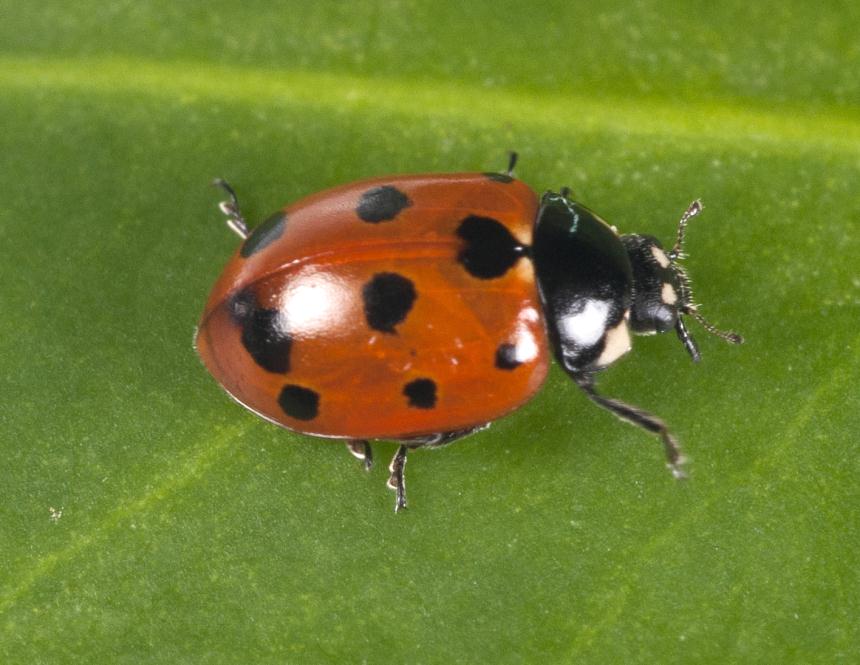
13. Adonis ladybird
The Adonis’ Ladybird is tiny, but a stunning species. Pronotums are black with a white margin . It features two white spots toward the head. Legs of the species is mainly black except for the brown ‘feet’. Adonis UK Ladybirds are more common within areas in the South part of UK.
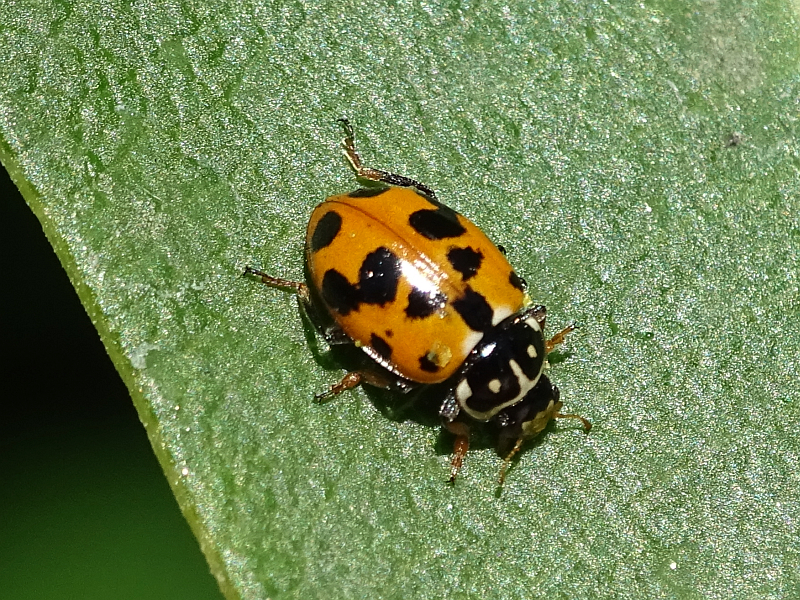
14. Water ladybird
A beautiful little ladybird that lives only in wetland habitats The Water Ladybird is easy enough to recognize due to its long shape and distinct coloration. This Water Ladybird is a predatory species that feeds on aphids that live within Bulrush ( Typha latifolia) as well as other riparian and aquatic plants.
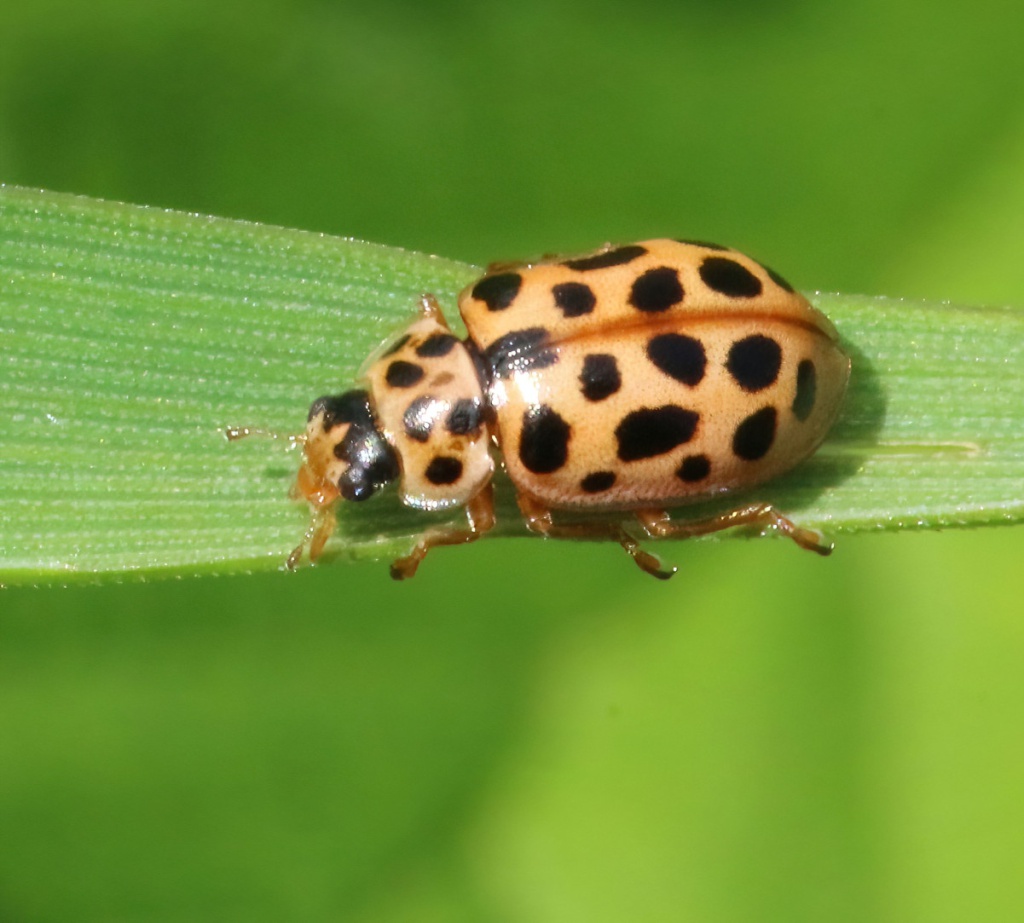
15. 14-spot ladybird
The 14-spot ladybird is a large ladybird that is found in a range of habitats, including grassland, woodland edges gardens and towns. Both larvae and adults consume aphids, which makes them an excellent companion for the garden. The 14-spot ladybird is known for its lengthy hibernation time, waking in May, but it takes until the end of May to breed.
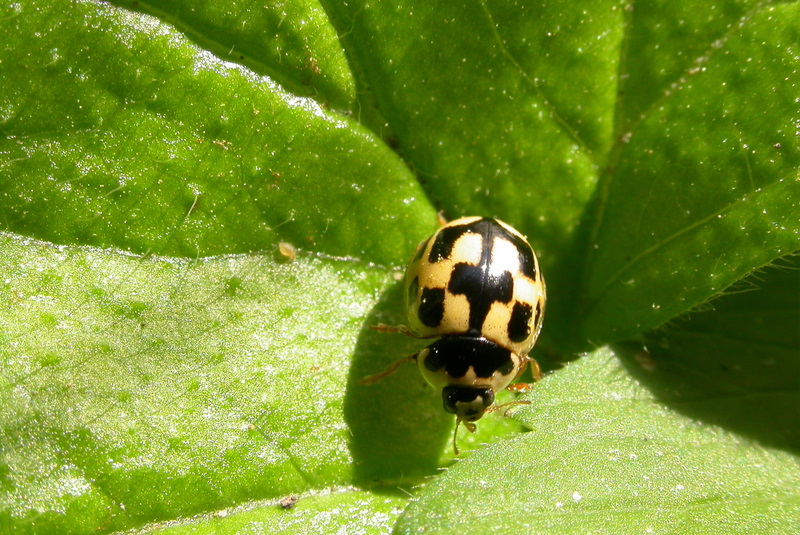
16. 10-spot ladybird
This species is extremely varied. Some individuals be orange, red or brown colour to the ground. They are globous in their body, which has an almost circular shape. The antennae and legs are typically either orange or brown. The species has eight different varieties, including three fundamental varieties.
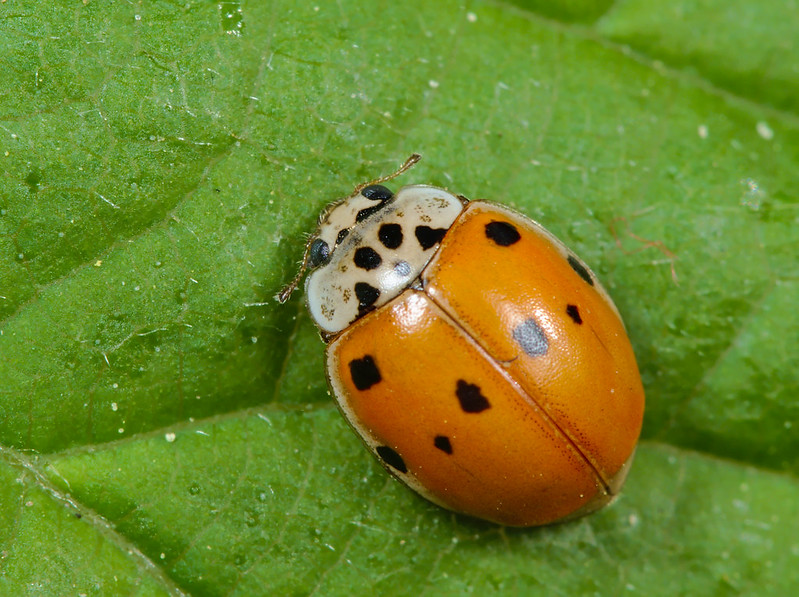
17. Pine ladybird
It is a tiny Ladybird (3 to 4 millimetres) that has red comma-like spots on the black elytra, and an flange that runs around the exterior of every elytron. Although it is primarily located in areas that are Pine but it also inhabits on other shrubs and trees like Hawthorn.
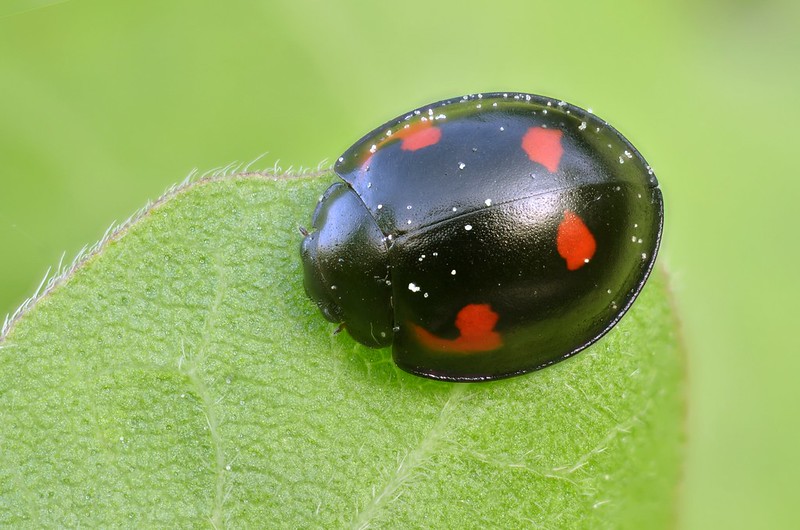
18. 22-spot ladybird
The 22-spot ladybird is a tiny ladybird that can be found in a vast variety of habitats, including woodland edges, grassland, gardens and towns. It is a food source for mildew (fungus) in a variety of species of plants. The life-cycle of a ladybird comprises four stages including the egg stage and the larval stage during which the larva goes through moults in a series.
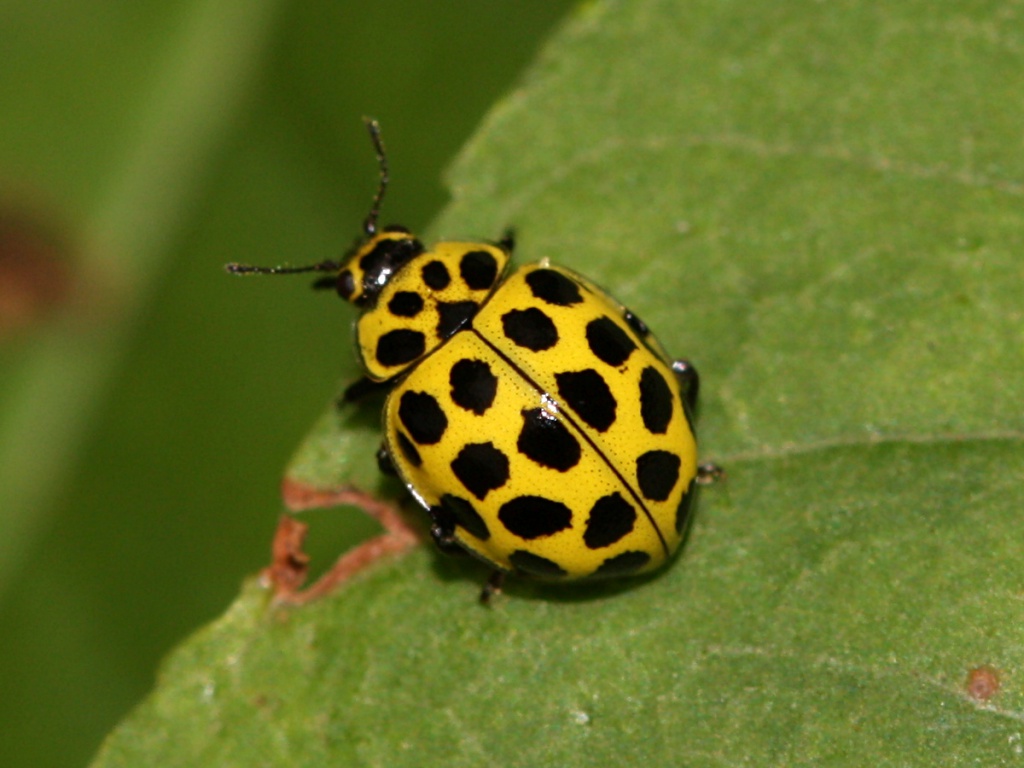
19. 24-spot ladybird
The 24 Spot Ladybird is a grassland-specific species sporting black spots over an elytra or a wing case that is orange-red. While some individuals might have up to 24 spots, this amount is not uniform as spot-fusions are not uncommon with its bigger than average dark marks.
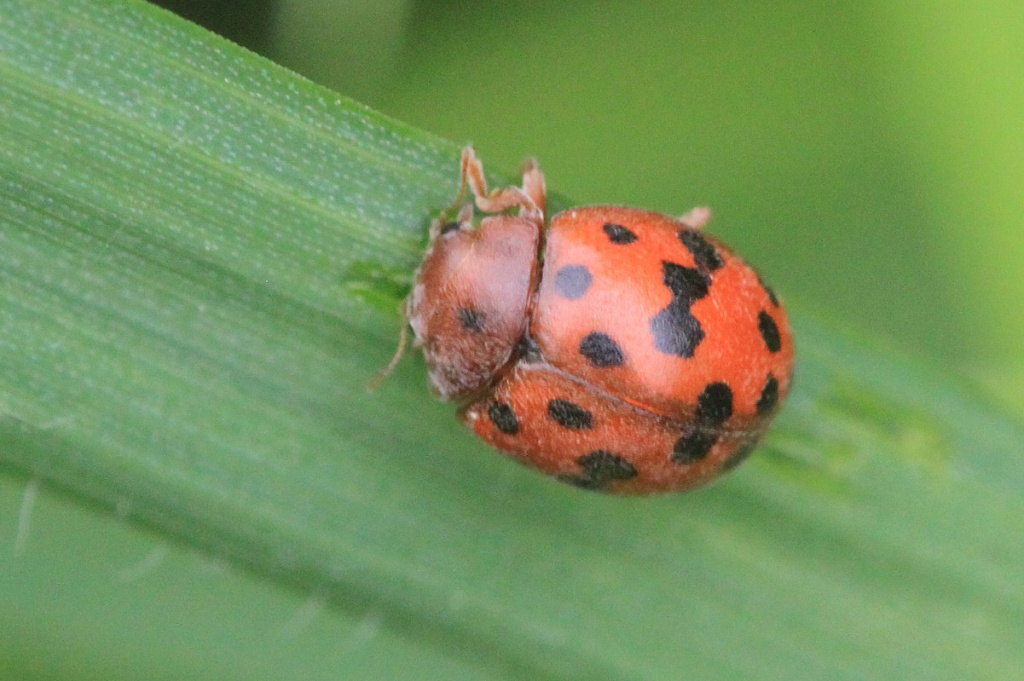
20. 16-spot ladybird
It is a small (3 millimetres) ladybird that is beige-coloured which has spots of black. The black central line is an identifying characteristic (only that it shares by the spot 14). It typically lives in the grasslands. It is most abundant in the summer. They feed on the pollen nectar, and fungi. And mostly this species found in southern regions.
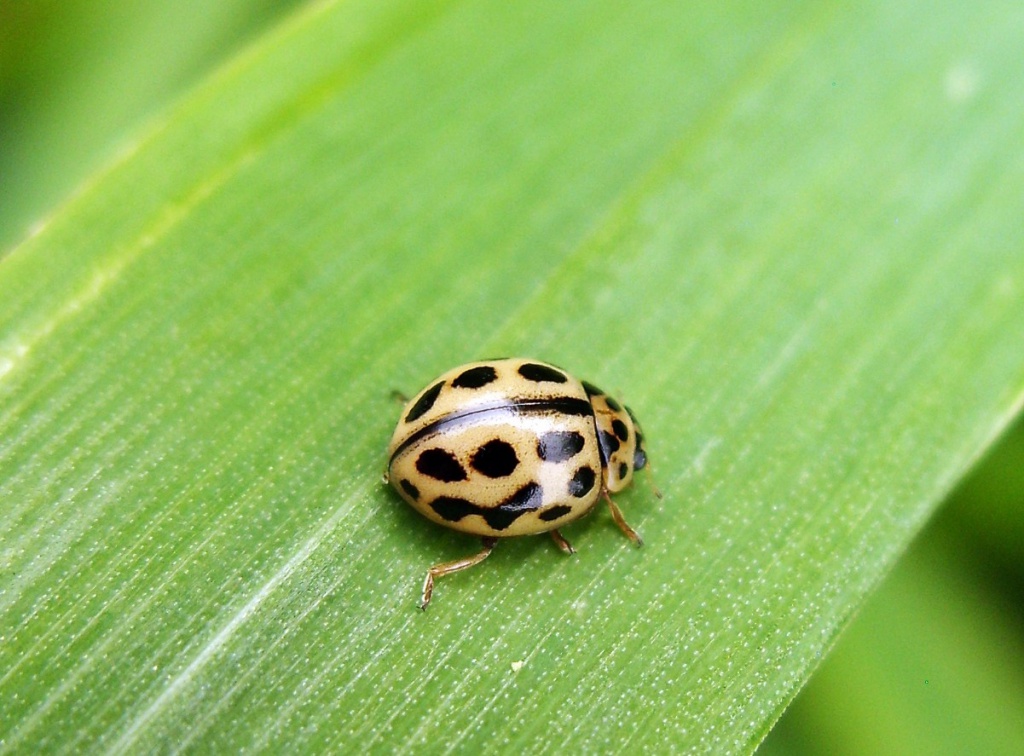
Ladybirds UK Conclusion
Ladybirds are beetles in the family Coccinellidae, they range in size from 1 to 10mm and are round or oval. There are more than 40 species of ladybird considered as resident in Britain. Many ladybirds are predatory feeding on aphids and, scale insects, they can help keep these insects under control.
Ladybird larvae all have a similar elongate body shape with three pairs of obvious legs. Most are black or dark grey, some have yellow or orange markings and many have hairs or spikes.
UK Ladybirds FAQs
Q1. Why do ladybirds have different spots?
Ladybirds have different spots so we can easily identify their class and species.
Q2. Can a ladybug fly?
All most all ladybirds species can fly. Very few of them cant fly but they have wings.
Q3. Can ladybirds bite?
They don’t sting and their bites don’t cause serious injury or spread disease.
Q4. What is the most common ladybird?
7-spot ladybird is very common in UK.

